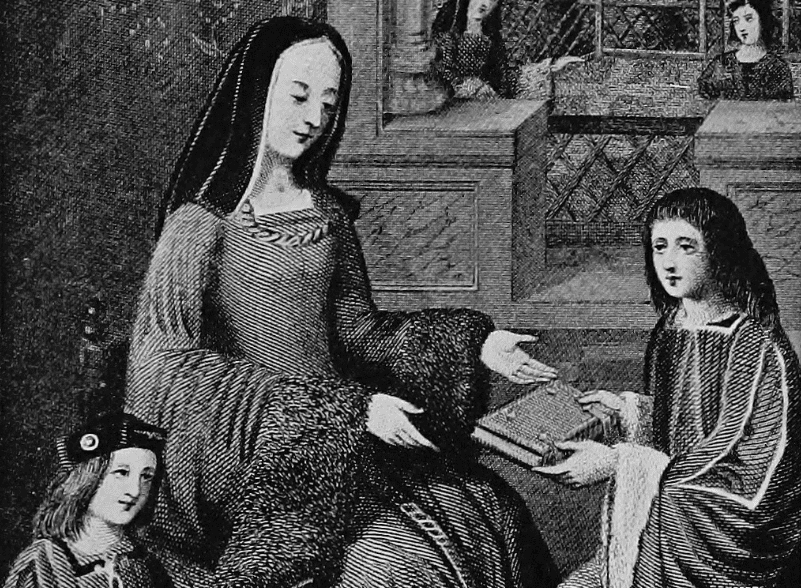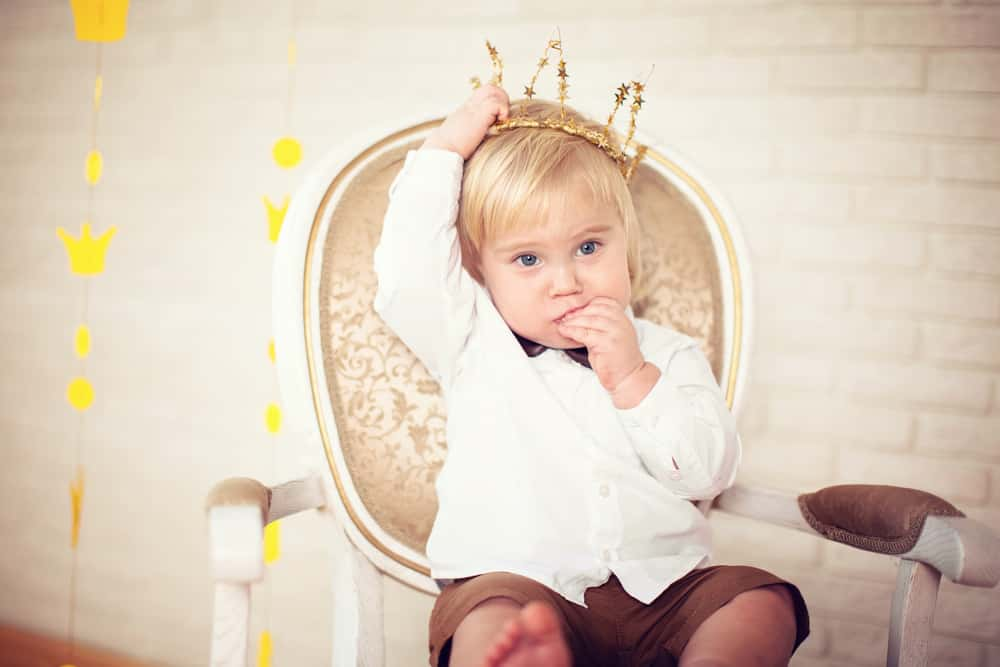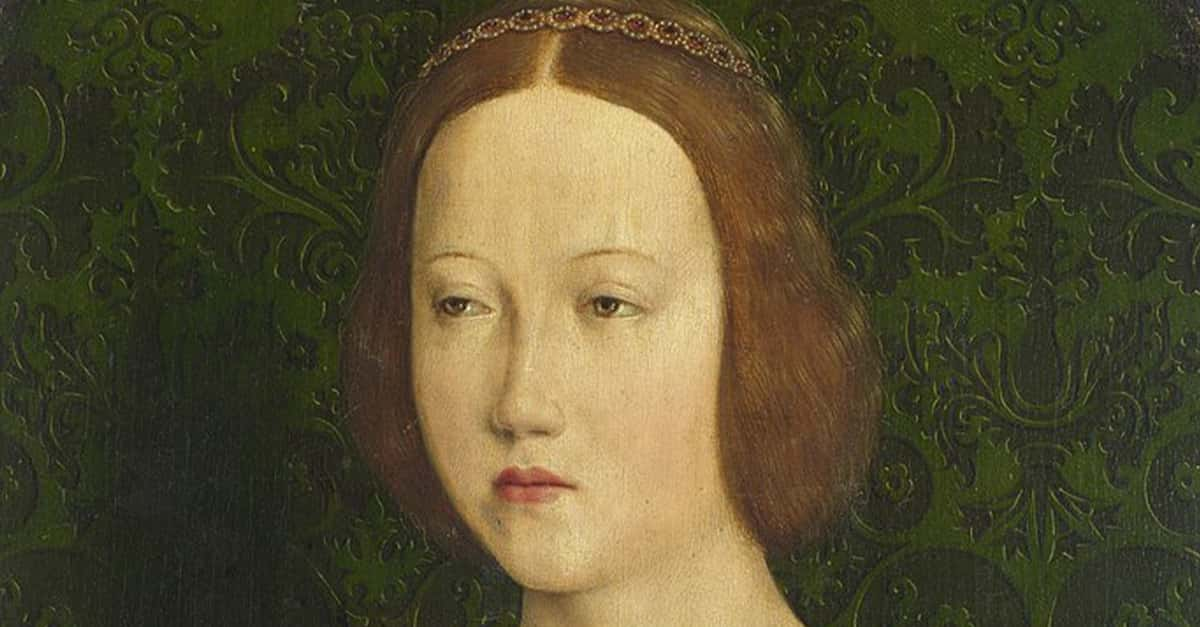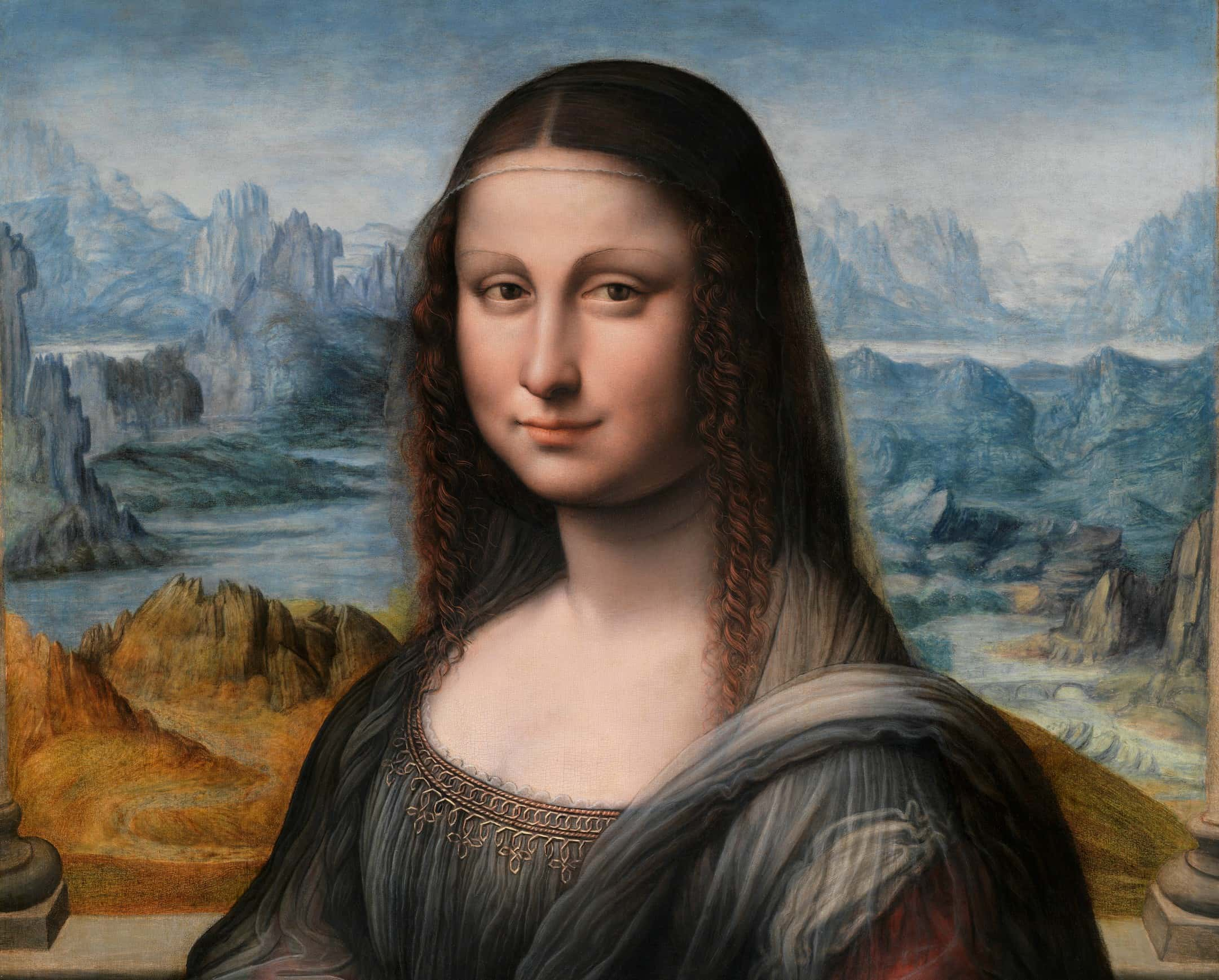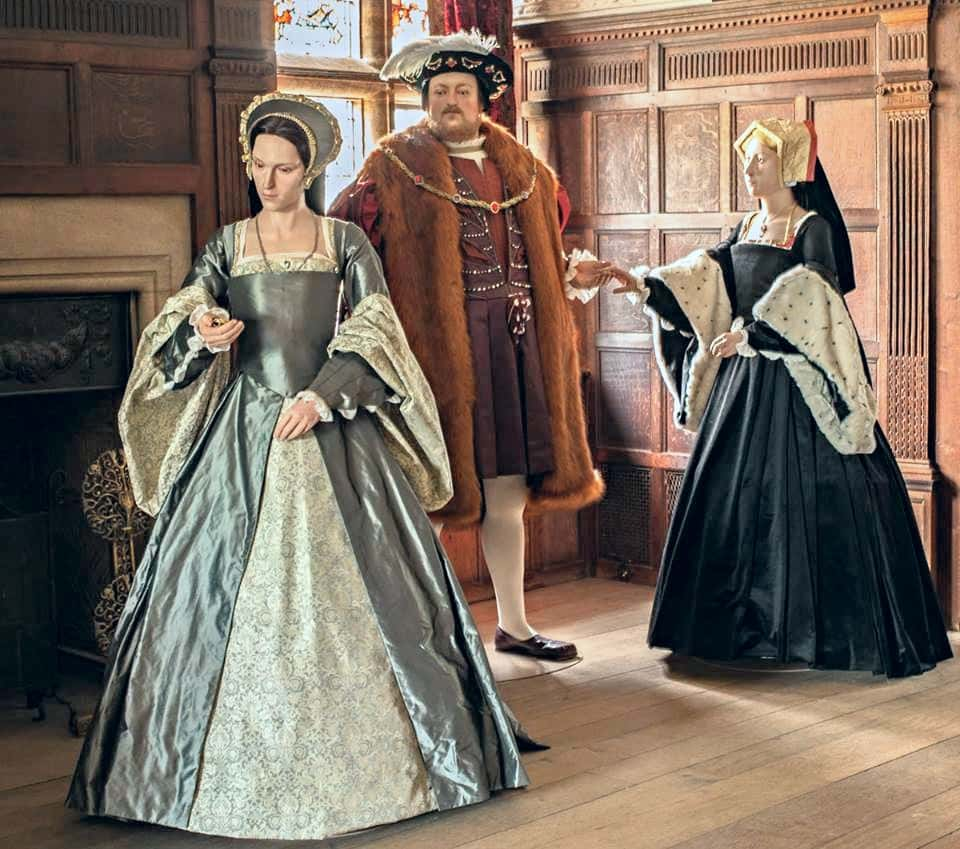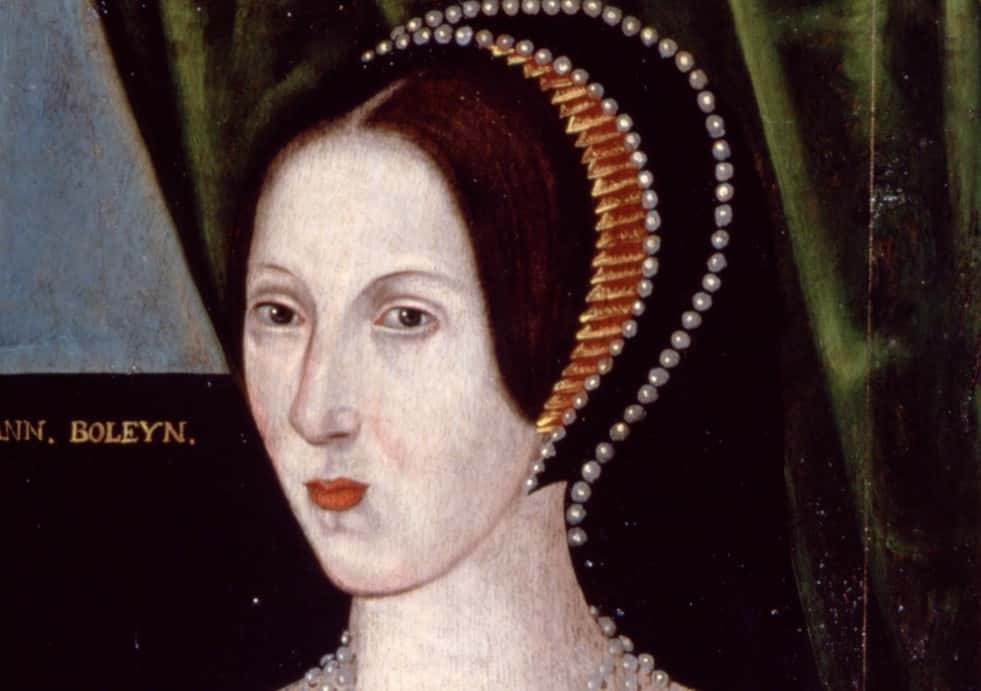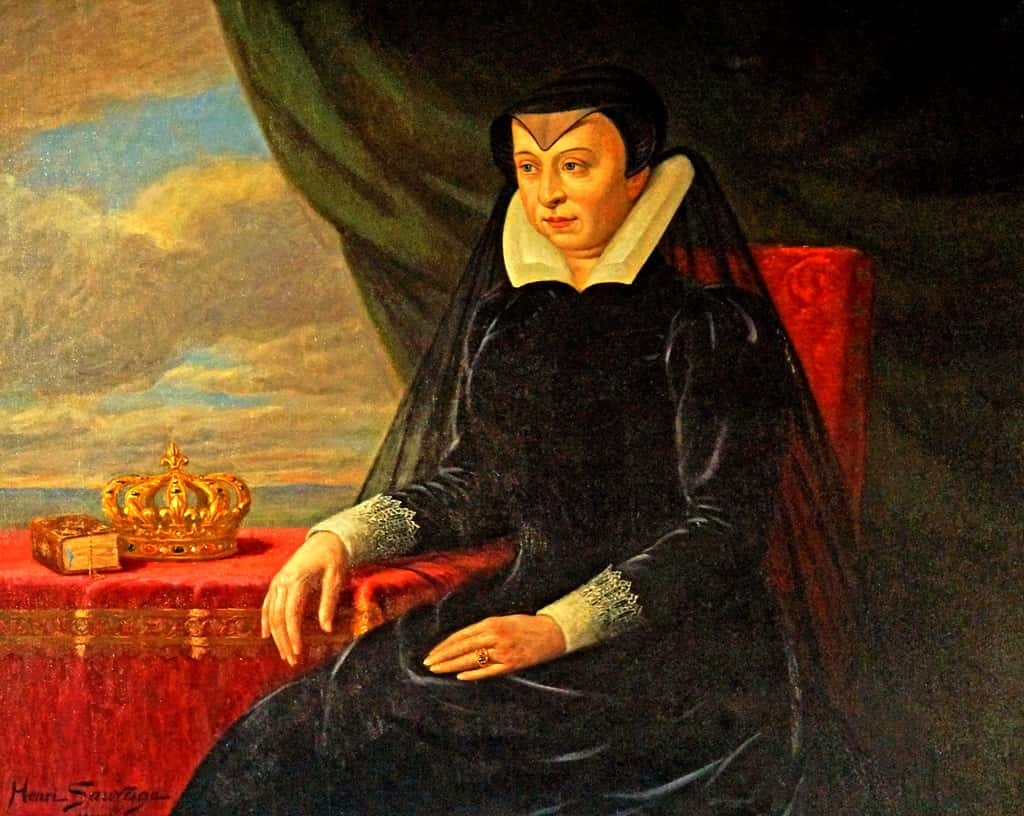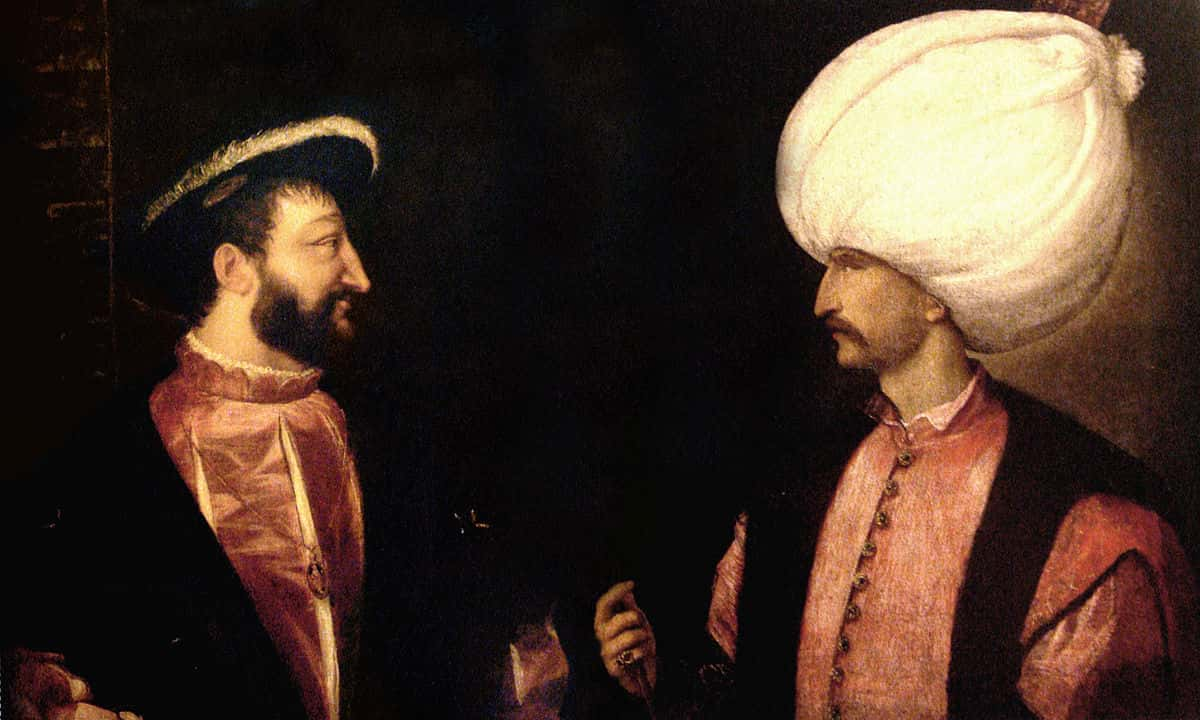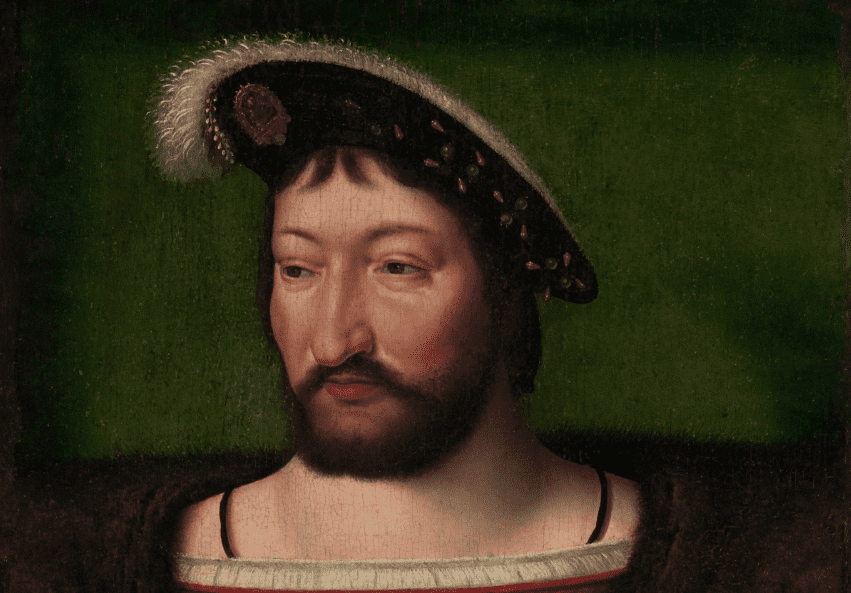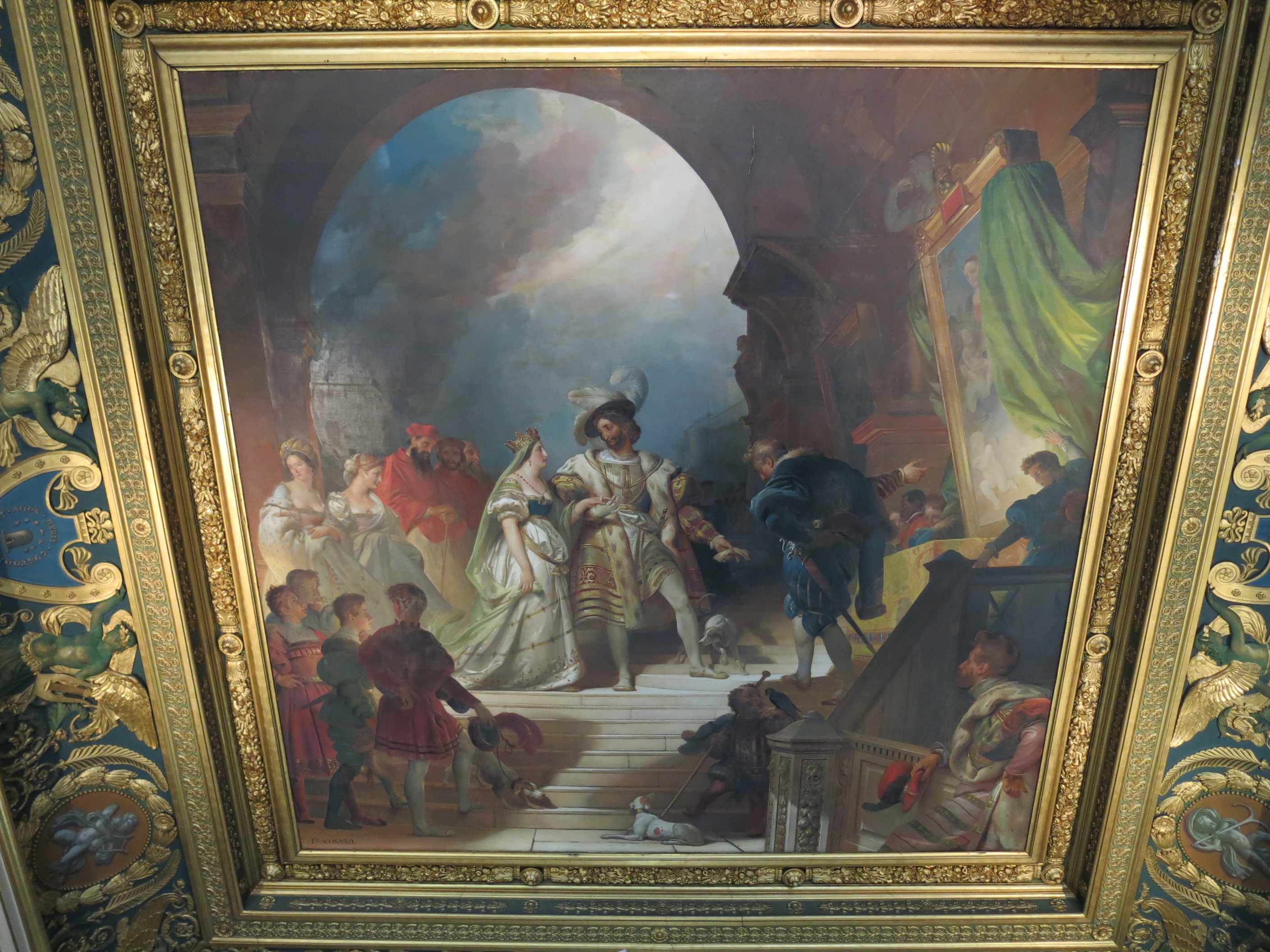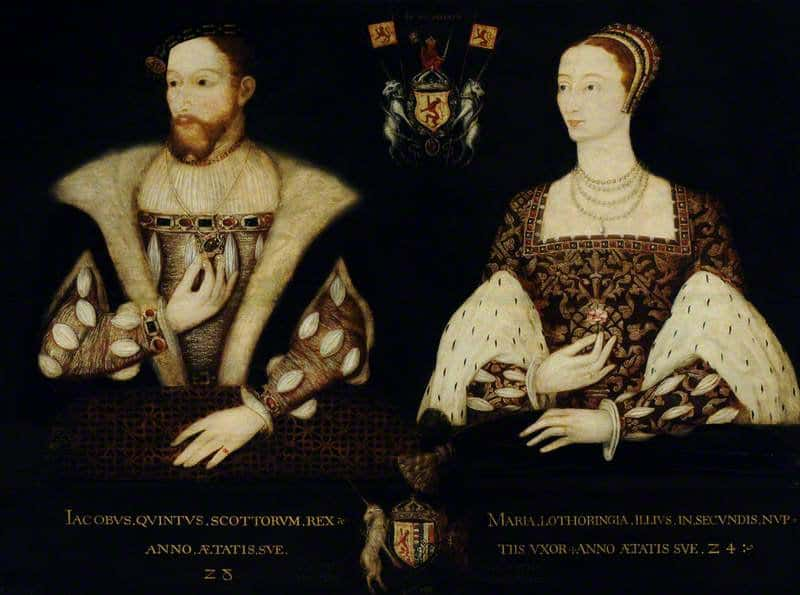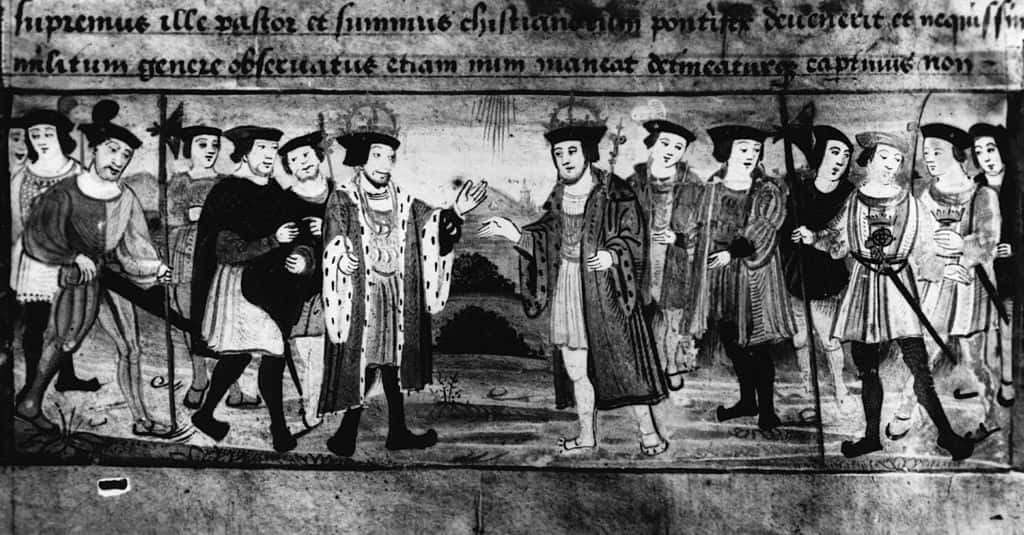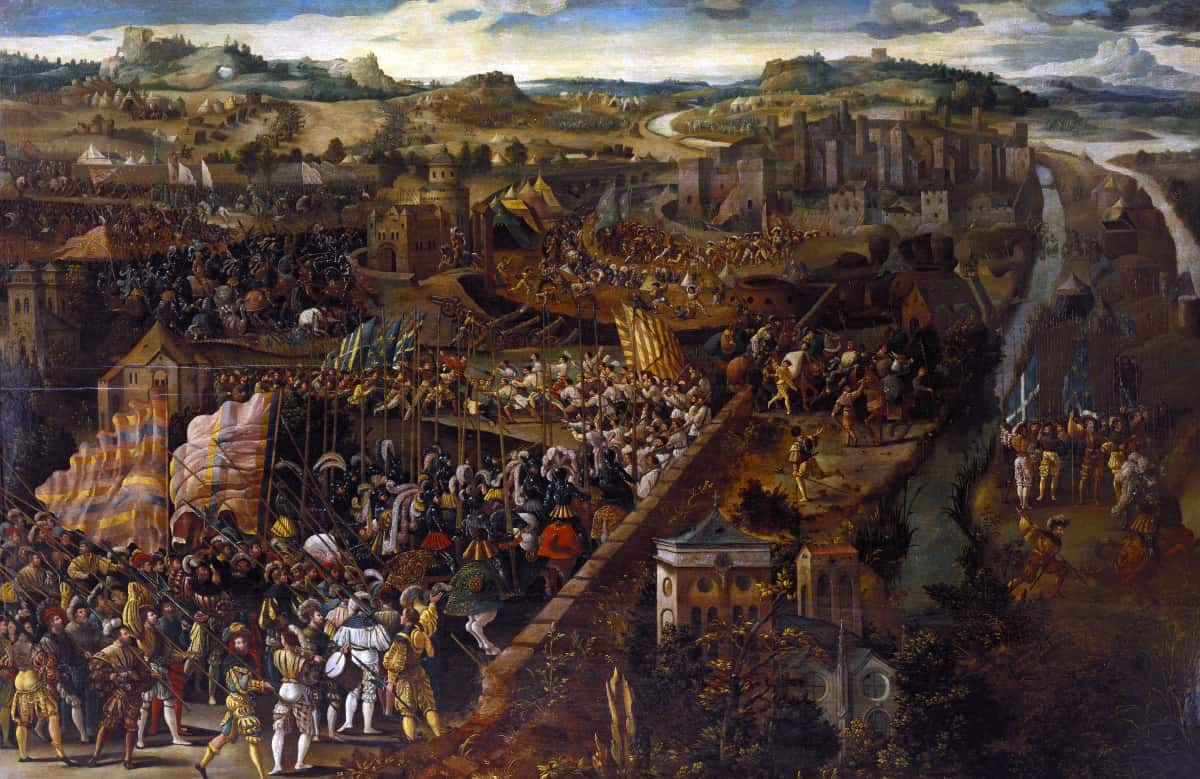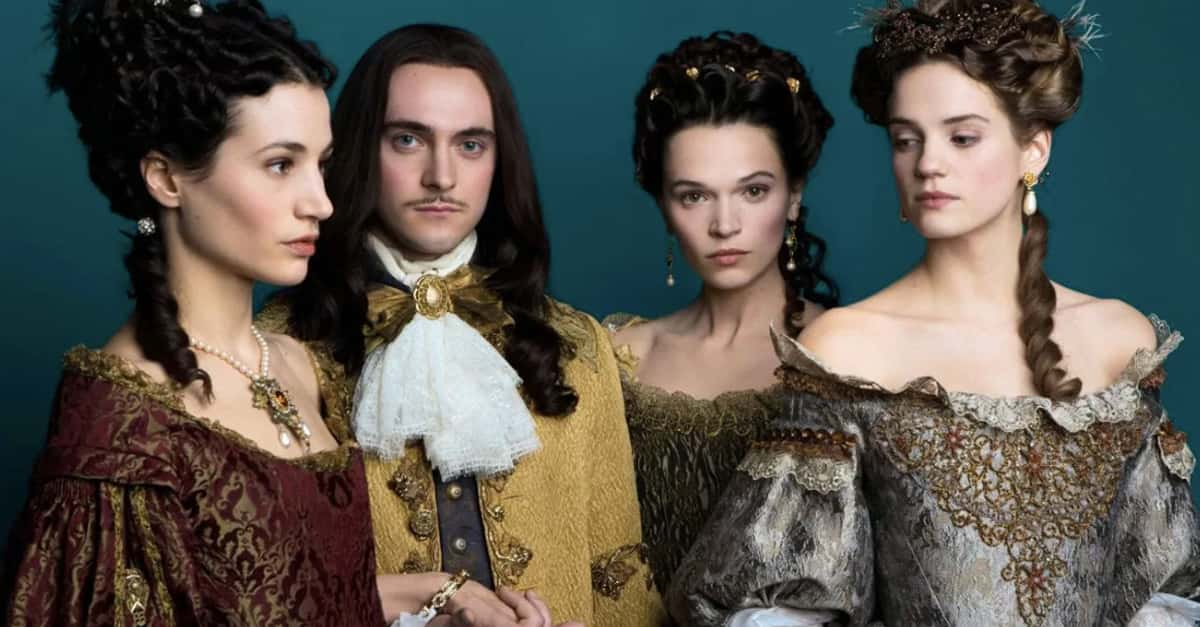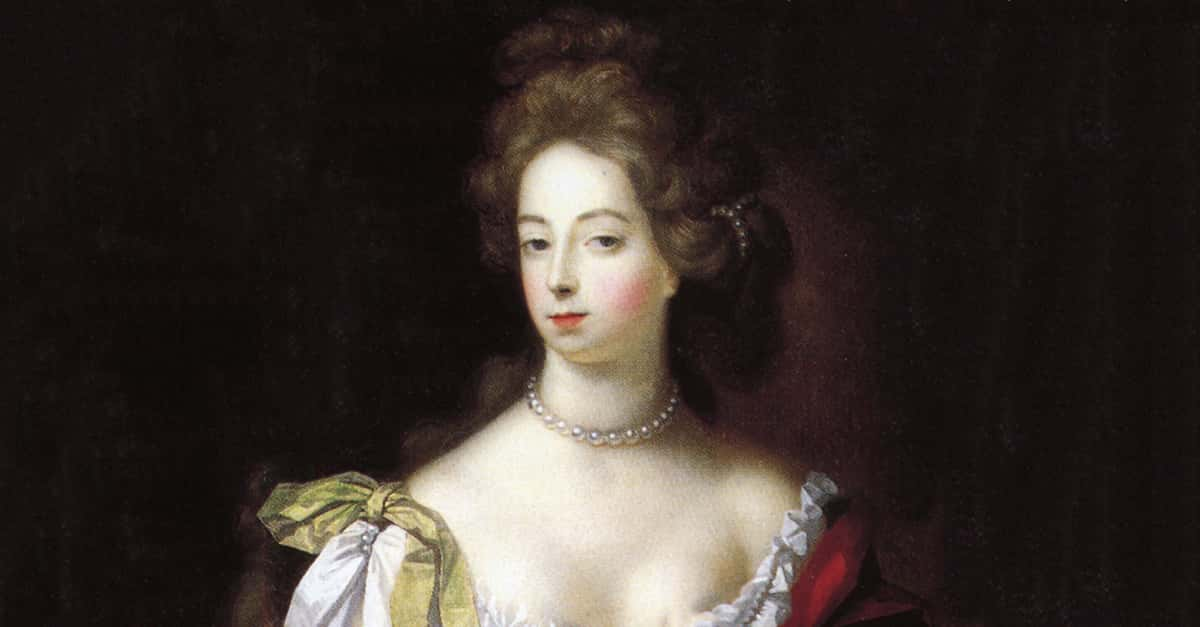Francis I of France is inevitably compared to his English contemporary, Henry VIII. Both kings had big personalities, big love affairs, and big scandals that rocked the face of Europe. The 16th-century French ruler is best remembered for holding the first truly Renaissance court in his country. From his unlikely ascension to the throne to his patronage of legendary artists like da Vinci, Francis clearly did not languish his neighbor's shadow. Paint a broad stroke to these 41 facts about Francis I of France, the Father of the French Renaissance.
Facts About King Francis I
1. I Smell a Crown in Your Future
A large man in both personality and stature, Francis was also known for his “big” personal parts. That’s right: his nose. One of his many nicknames was “François du Grand Nez” or "Francis of the Large Nose.” It’s not the most creative name, but at least it was accurate.
2. Little Lord Longshot
At the time of his birth, Francis stood on a very minor branch in the Valois royal family tree. Born on September 12, 1494, to Charles d'Orléans, Count of Angoulême, and Louise of Savoy, Francis only descended from royalty as the great-great-grandson to King Charles V of France. With that much distance, no one expected him to rule. But the 16th century finds a way….
3. Your Low Sperm Count is My Gain
A series of reproductively-challenged kings paved Francis’s way to the throne. At the time of his birth, Francis of Orléans was only third cousin to the sitting king, Charles VIII. Charles himself died without children in 1498, which gave the throne to Francis’s other cousin, Louis XII. Louis had no sons, but two daughters.
Unfortunately, France’s Salic law barred women from inheriting the throne. With these twists of fate (and fertility), the four-year-old Francis suddenly became heir for most of Louis’s reign.
4. The School of Mom
If Francis is the father of the French Renaissance, his mom, Louise of Savoy, is the movement’s grandmother. In 1496, Francis’s father died after catching a cold in the wild when Francis was just a toddler. Louise was now a widow of two children at only 19 years old. For the rest of her life, she would take charge of her children’s education and careers.
Representing their interests at court, she ensured both Francis and his older sister Marguerite were well-prepared and learned in the spirit of the Italian Renaissance.
5. My Little Duchy
At just four years old, Francis became the Duke of Valois. The title secured his status as heir presumptive to the French throne. What were you doing in preschool?
6. Rounding Out the Bases and Family Tree
When he was barely 20 years old, Francis was married to Princess Claude of France. As the eldest daughter of Louis XII, Claude’s hand solidified Francis’s position as the heir…while also keeping Claude’s maternal inheritance to the duchy of Brittany in France’s grasp.
7. No One Likes a Fifth Wheel
Francis mostly ignored his first queen, Claude of France. Of course, neither of them expected romantic love from their political marriage. However, Francis made Queen Claude suffer the special indignity of playing fourth fiddle at his court. Francis divided the royal patronage between his mother Louise of Savoy, his big sister Marguerite, and his first chief mistress Francoise de Foix.
The pious Claude—likely knowing her chances were slim against this trio of assertive women—stuck to her private life of non-stop pregnancy and prayer.
8. What a Way to Start a Year
Talk about “New Year, New Me.” Francis’s reign began on January 1, 1515, upon the death of his father-in-law, Louis XII. The elderly Louis’s “official” cause of death had been “overexertion in the bedchamber” with his new 18-year-old wife, Mary Tudor of England (yes, the younger sister of Henry VIII). In reality, it was the less sexy ailment of “gout” that did Louis in.
It didn’t matter too much either way; Francis was finally on the throne.
9. Never Too Early to Find Love Again?
Upon his ascension, rumors swirled that the new King Francis had actually planned to wed Mary Tudor, his widowed (and beautiful) stepmother-in-law. Within the first week of her tragic grieving, Francis did pay visits to Mary—perhaps in hopes that sickly Queen Claude would either die soon or be politely discarded.
Mary later eloped with Charles Brandon, the Duke of Suffolk; Francis was stuck with Claude for now.
10. Does It Come in Travel Size?
During his reign, Francis was a patron to many famous painters, including Leonardo da Vinci himself. The Italian artist even brought the Mona Lisa to the king’s court. In fact, the idea of the Louvre Palace as an art museum is generally credited to Francis, who truly began the French royal family’s collection of international art.
11. Who Needs Amazon Prime When You Have a Royal Decree?
In addition to visual art, Francis was a huge patron of literature. In 1537, the king ordered that every book sold in France had to reserve a copy for his personal library.
12. My Word Isn’t Gold
The “Field of the Cloth of Gold” in June 1520 was a legendary peace summit between England and France. It also marks the first meeting of Francis I of France and Henry VIII of England. This month-long tournament was meant to solidify their treaty and show off the bounty of an Anglo-French union with expensive feasts, jousts, and festivities under 2,800 golden tents across Calais.
Unfortunately, not much actually got done under those tents, politically speaking. Anglo-French relations quickly dissolved when England soon sided with France’s enemy, Charles V, Holy Roman Emperor.
13. Let’s Get Ready to Grumble!
Henry VIII of England and Francis agreed upon a “leave the beefs at home” policy during the Field of the Cloth of Gold. There would be zero competition between the kings—not even in tourney games. Unfortunately, Henry VIII crawled back on the deal and challenged Francis to a “surprise” wrestling match. More unfortunately (for Henry VIII), Francis won their tussle, which left Henry in a very petty mood for the rest of the festivities.
You brought it on yourself, dude.
14. The Seven Degrees of Henry VIII
Francis had a lot in common with Henry VIII—maybe too much. One of the French king’s rumored mistresses was Mary Boleyn, the confirmed mistress of King Henry and sister of Anne Boleyn. Both Boleyn sisters were ladies-in-waiting o Francis’s wife, Claude, so it is very likely they crossed paths with the French king.
15. Not All Gentlemen Prefer Blondes
Francis had a rumored fascination with Anne Boleyn, who was a maid in his wife’s court before she was ever a Queen of England. Upon first leering at Anne, he is often cited as saying, “Venus was blonde, I’ve been told: Now I see that she’s a brunette!”
16. Parting “Gift”
Francis’s first wife died in 1524 in unknown circumstances. Although complications from childbirth or tuberculosis are often cited as Queen Claude’s cause of death, others whispered that she was infected with syphilis by her own promiscuous husband.
17. This Band Plays Itself
Francis preferred the company of women. He was followed by an entourage of beautiful and educated ladies known as “la petite bande,” who offered him intellectual and “other” forms of stimulation. Not all of these women had romantic relationships with Francis. For one, there was his daughter-in-law, Catherine de Medici, whose bold wit he greatly admired.
There was also Diane de Poitiers, who tried to make herself the king’s mistress. When she failed, Diane “settled” for Francis’s son, Prince Henri, aka Catherine’s husband. Awkward.
18. Laying Down for My Sons
To free his sons from prison, Francis agreed to marry Emperor Charles’s sister in 1530. Like with Claude, Francis mostly ignored this second wife, Eleanor of Austria. Unlike his fertile marriage with Claude, his union with Eleanor produced no children. Francis rarely did his marital “duty.” To be fair, it’s hard to feel sexy when your partner is a living callback to the imprisonment of your kids.
19. Peep Show for the People
Francis didn't exactly hide the fact that he wasn't interested in his second queen, Eleanor of Austria. On the day that she first entered Paris, the King openly showed himself with his mistress, Anne de Pisseleu d'Heilly, standing in a window with her for all the public to see for nearly two hours.
20. Beauty and Brains
Anne de Pisseleu d'Heilly was the defining mistress of Francis I of France’s reign. Anne was described as sprightly, blonde, and "the most beautiful among the learned and the most learned among the beautiful.” She supplanted Francis’ first long-term mistress, Francoise de Foix, and held onto this position for the remainder of his life.
She was also Protestant collaborator, who did much to advocate for the “new” faith in her lover’s court.
21. It’s Not a Phase, Dad
While Francis was close to his daughter-in-law, Catherine de Medici, the king did not get along as charmingly with her husband—his own son, the future Henri II. Father and son were exact opposites in terms of personality. Francis was a social animal whereas Henri was gloomy, private, and given to melancholy.
I guess being a prisoner of war before puberty can do that to you…
22. Have Faith in Friendship
In 1536, Francis allied himself with Sultan Suleiman I the Magnificent in the first ever Franco-Ottoman alliance. Their deal also marked the first-ever non-ideological alliance between a Christian state and a Muslim state. Naturally, this caused outrage across Christendom, Years later, it would be referred to as “the sacrilegious union of the lily and the crescent.”
23. Relax, There’s Enough Colonialism for All of Us
Francis came to power as Europeans began to partake in colonial expansion. He did not take well to the Treaty of Tordesillas, which split the “New World” between Portugal and Castille. To quote Francis, “The sun shines for me as it does for others. I would very much like to see the clause of Adam’s will by which I should be denied my share of the world.”
24. Money Flows Like Water
The St. Lawrence River in Canada was claimed for Europe under Francis’s reign. In 1534, the king patronized Jacque Cartier to explore the famous strait on behalf of France for "certain islands and lands where it is said there must be great quantities of gold and other riches.”
25. The Enemy of My Enemy is My Sister’s Friend
The Protestant Revolution also coincided with Francis’s tenure. Compared to other European powers, Francis was relatively tolerant to this Reformist take on Christianity. This was in huge part due to his beloved sister, Marguerite de Navarre, who was a Lutheran and very influential in her brother’s court. Moreover, it was certainly to France’s advantage that German princes turn against the Catholic Charles V on account of faith…
26. The Scales of Power
In a characteristically colorful move, Francis took the salamander as his personal emblem. For his personal Latin motto, the king took “Nutrisco et extinguo” or "I nourish [the good] and extinguish [the bad]."
27. Happy Death Day to Me
On the day of Francis’s death at the age of 52, he was allegedly complaining "about the weight of a crown that he had first perceived as a gift from God." His death also coincided with the 28th birthday of his son and successor, Henry II. What’s a better birthday gift than a crown?
28. I’m Pretty on the Outside
Francis I of France passed away on March 31, 1547, after a severe fever. When doctors cut open his body, they discovered “an abscess in the stomach, his kidneys shriveled, his entrails putrefied, his throat corroded, and one of his lungs in shreds.”
29. Drop the Scissors, Your Majesty
Francis’s grooming pact with Henry VIII almost caused an international incident. In the months preceding the Field of the Cloth of Gold in 1514, both kings agreed to not shave their beards until they finally met in person. Henry’s first queen, Catherine of Aragon, grew sick of his “au naturel” look and demanded he trim the whiskers. As a (usually) considerate husband, Henry obeyed his wife.
The French were outraged. The English just snubbed France for Spanish interests! Luckily the English ambassador to France (who was, ironically, Anne Boleyn’s father, Thomas Boleyn) assured Francis’s mother that “their love is not in the beards, but in the hearts.”
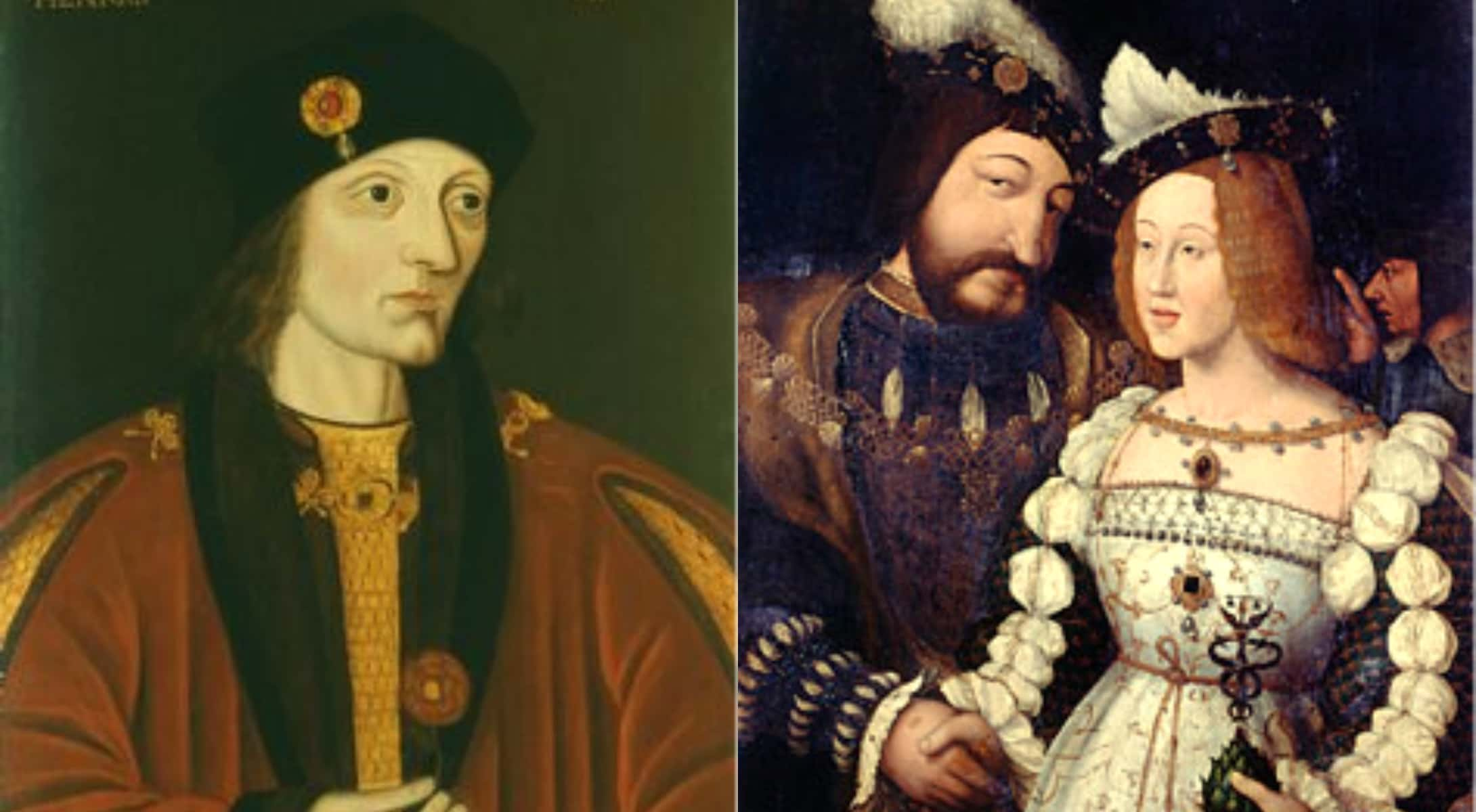
30. They Grow Up Too Fast
Francis’ oldest (and apparently favorite) daughter, Princess Madeline, fell in love at first sight upon visiting King James V of Scotland. The feeling was mutual; the couple begged Francis to let them wed. While it was politically convenient, Francis still had worries. Madeline was of lifelong bad health, and Francis was worried that the Scottish weather might literally kill her.
Nevertheless, Francis let the Daddy’s Girl go with James in 1537.
31. Daddy’s Little Burn Out
Francis’s anxieties about his daughter’s health turned out to be tragically founded. Just six months after her New Year’s Day marriage to James V of Scotland, Madeline of Valois caught a deadly fever and passed away in 1537. Madeline’s brief but bright tenure as Queen of Scots immortalized her as “The Summer Queen” in song (While James went on to remarry himself to Marie de Guise and father Mary Queen of Scots, it’s telling he interred himself with Madeline).
32. Mama’s Boy
Reflective of how much he trusted his mother, Francis made Louise of Savoy his regent whenever he left for war. In fact, it was Louise who basically ran France for the period of his imprisonment from 1525 to 1526.
33. Sister, You Can’t Miss
Francis’s older sister was Marguerite de Navarre, who has been called “The First Modern Woman.” At her brother’s court, she led an internationally renowned salon called “New Parnassus.” A young Anne Boleyn is believed to have been a regular in her salon.
34. For Want of an Escort
In 1532, the usual ladies’ expert King Francis scrambled to find a proper plus-one for his second meeting with Henry VIII of England. The English king was showing up his own queen-to-be, Anne Boleyn. The French king’s current wife, Queen Eleanor was Catherine of Aragon’s niece; she was an obvious “no.” Francis was also hesitant to let his sister, Marguerite, be too close to the scandalous Anne.
As a “resolution,” Francis briefly suggested he bring his own mistress. Faced with this awkward and insulting (for everyone) scenario, Anne just stayed in her guest rooms as Henry and Francis had a bro’s night.
35. A Bummer Staycation
The Italian Wars (1494-1559) would come to define Francis’s military career. Although they started before his birth, this Franco-Italian grab for land put him at never-ending odds with the Holy Roman Empire. It culminated in the humiliation of his life. In 1525, the king was captured in the Battle of Pavia and held as a POW of Emperor Charles V in Madrid for almost a year.
36. Sip on This
According to lore, the Italian soup “Zuppa alla Pavese,” consisting of fried bread and poached eggs in broth, was invented after the Battle of Pavia to feed a captive King Francis I. Even in a hostage situation, a royal is entitled to comforts.
37. My Sons for My Shackles
To free himself from the Holy Roman Empire, Francis was forced into a deal: give up his claim to Artois and Flanders…and surrender his two surviving sons, Francis and Henri, as hostages to Spain. Once he was free, Francis immediately repudiated the treaty, arguing it was made under duress.
38. Where Art Thou, Mon Père?
For four years, Francis and his mother Louise campaigned to get the Princes back from Spanish captivity. During their time in jail, the young boys were housed in dank conditions and had forgotten how to speak French. While their release and return home was slow to negotiate, they eventually made it back to the French court and relearned their mother tongue quickly.
39. Thirsty for Answers
In a common theme for Francis’s family, his first son and heir died in mysterious conditions in 1536. At age 18, Prince Francis, Duke of Brittany, was enjoying a round of tennis. Parched from exercise, he asked for a glass of water. The healthy boy drank it…then collapsed and died after several days of illness. The secretary who brought Prince Francis the water was himself brought to France by Catherine de Medici.
Under torture, the secretary in question, Count Sebastiano de Montecuccoli, confessed that it was not Catherine who told him to poison the prince—his real patron was the King’s foreign enemy, Charles V of Spain. The secretary was executed, but Charles V would insist he had nothing to do with the alleged killing. History generally agrees the prince died of sudden tuberculosis, for which the Count was violently coerced into confessing guilt.
40. Dad Likes to Watch
In 1533, Francis wed his son Henri to the legendary Catherine de Medici, who was just 14 years old at the time. The bride and groom consummated their union that night…as father (-in-law) Francis stayed in the room with some of his trusted advisors to make sure the deal was fully “sealed.”
41. Who Leaked the Burn Book?
Francis’s ambivalence about the Protestants reversed in a sour way during the 1534 “Affair of the Placards.” On the night of 17 October 1534, major French cities woke to the sight of flyers on their streets, protesting against the Catholic Mass. Paranoid about this being a plot against him personally, Francis ordered all suspected Protestants on masse (no pun intended) to be arrested, tortured, and, in many cases, burned. Entire villages were leveled in the aftermath.
Sources: 1, 2, 3, 4, 5, 6, 7, 8, 9, 10, 11, 12, 13, 14, 15, 16, 17, 18, 19, 20, 21, 22




